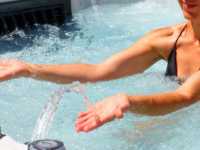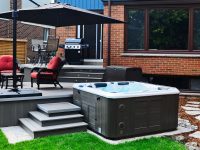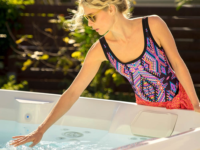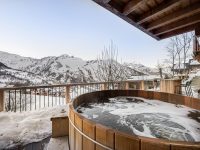If you decide to convert your hot tub to a saltwater tub, you’re aware of its benefits that include freshness, softness, easy maintenance, and fewer chemicals. But it will also do your body good, for example, prophylaxis against psoriasis and eczema[1], and improvement of breathing[2]. To get better at it, I’ll add to your knowledge with tips and insights and walk you through the steps of installing salt generators and which one is best to choose.
In addition, you’ll see saltwater hot tub products such as salt generators, test strips, and filters that are considered the best on the market today. My team analyzed the market for these products, selected 10-15 items in each section (salt generators, water salinity tapes, chemical level kits, filters), and read over 600 comments to determine criteria such as product quality, durability, ease of use, the correctness of readings (in test strips), all to end up with the list of products that will be useful and will give satisfactory results.
I, in turn, analyzed this list and interviewed saltwater hot tub owners to get more hands-on experience, and as a result, I will only show you items worth your attention and money. So let’s make the most of your saltwater hot tub experience with this guide.
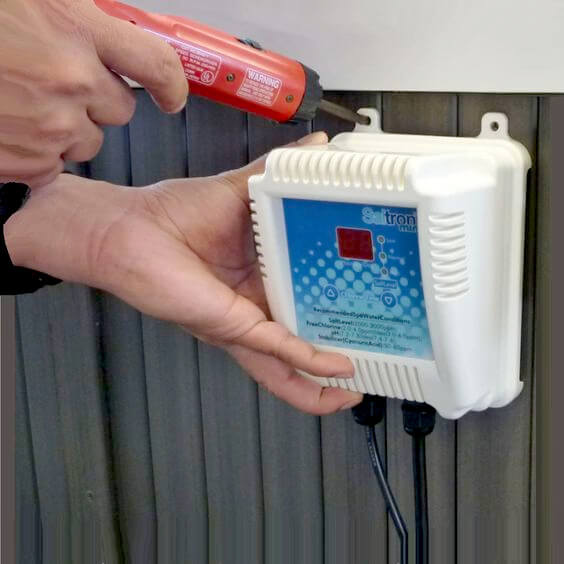
Saltron Mini Salt System — The easiest way to convert
☝️ But … not suitable for every hot tub. Read more to know why, what other methods exist and how it all works.
You may have the following questions that we will answer in this article.
- Can any (my) hot tub be converted to a Saltwater tub?
- What is better saltwater: Chlorinator or Brominator?
- What is better: Drop-in or In-line saltwater system?
- What do you need for conversion to a saltwater hot tub?
- How to install a saltwater system?
- How to maintain a saltwater hot tub?
- Are saltwater hot tubs more expensive compared to Chlorine/Bromine tablets?
The main question — is it possible to turn any hot tub into a saltwater tub?
In a nutshell – yes! Let’s see how it works to understand why and how.
Using a natural chemical reaction between salt and water — electrolysis[3], saltwater systems provide your hot tub with a steady supply of chlorine or bromine. These are the same sanitizers that are commonly used for hot tub water, but with the saltwater system, they are produced naturally.
You don’t need to add salt daily. Only on the initial setup. The salt system generates chlorine/bromine after it breaks down back into salt and the cycle continues since salt does not evaporate from the water. You may need to add extra salt only if you add a lot of new water. Otherwise, the system uses the same salt till the next refill (up to a year depending on the intensity of usage). This makes the installation of this system more attractive — continuous savings on chemicals.
Verdict — every hot tub can be converted to saltwater because saltwater systems generate the same sanitizers used in hot tubs. Slightly salty water will not damage your equipment, although you should ensure that the salinity is within the normal range (2000-2500 ppm). It’s easy to control the salinity with Salinity Test Strips.
5 Steps To Convert to a Saltwater Hot Tub
Now, we will follow a step by step guide that covers the whole process of conversion to a saltwater hot tub.
Step 1 — Decide How To Convert to a Saltwater Tub — Chlorine vs. Bromine
There are two ways to get a saltwater hot tub — chlorine generators and bromine generators. Chlorinators are more popular as they are at least half the price of brominators (often people don’t even know that there are brominators). There are also saltwater systems that can produce both — chlorine or bromine depending on the type of salt you use (always read manuals and make sure the salt is suitable for your device).
| Chlorinator | Brominator |
| (use Sodium Chloride to produce chlorine) | (use Sodium Bromide to produce bromine) |
| Price range $ | Price range $$ |
| Chlorine is both an oxidizer and a sanitizer. Additional shocking may be required only after very intensive use | Bromine is only a sanitizer. Additional shocking may be required more often than with сhlorine |
| Chlorine is less effective than bromine at temperatures above 75°F | Bromine works better than chlorine at higher temperatures (above 75°F) |
| Chlorine is less effective than bromine at varying pH levels. | Less efficient loss of bromine at varying pH levels (compared to chlorine). |
Saltron Mini Salt System
Price range: $
🔹Drop-in chlorinator
🔹No plumbing required
🔹Durable titanium cell
ControlOMatic SmarterSpa
Price range: $$
🔹Drop-in chlorinator
🔹No plumbing required
🔹Durable titanium cell
🔹Self-cleaning technology
Bromine Generator BluWater
Price range: $$
🔹Free of chlorine
🔹Easy to install
🔹Economically and environmentally friendly
Verdict:
I can’t give a simple answer to which is better, bromine or chlorine? This age-old dilemma also applies to saltwater systems. Сhoose what is more suitable for you based on the characteristics.
Chlorinator — is my personal choice for saltwater hot tubs since it has significant advantages: the cost and the availability of the device and the cost of salt.
Step 2 — Decide Which Device You Use To Convert — Drop-in or In-Line
There are two types of saltwater system constructions — Drop-in and In-line. Here, I’ll give you an overview of each design and its pros and cons.
- Drop-in saltwater generators — you only need to submerge the cell into the hot tub water to make it work.
Construction is very simple and consists of 2 main parts:
Control panel — a control unit for adjusting the intensity and amount of chlorine or bromine extraction, a timer, and other functions depending on the model.
Electrolytic cell — produces chlorine/bromine, and consists of a plastic case containing electrodes. They are usually made of Titanium (corrosion-resistant material).
Some models (e.g. Saltron Mini) are equipped with a cell holder, which is very convenient and used to place the cell in (according to safety rules you should remove the cell from the water while soaking in the hot tub)
Pros: price, easy installation
Cons: visible cables
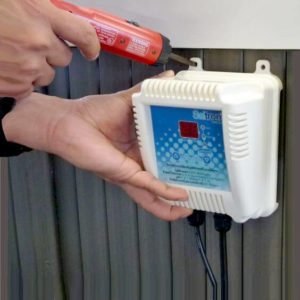 | Saltron Mini Salt System Drop-In Saltwater Chlorine Generator | |
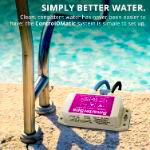 | ControlOMatic SmarterSpa Saltwater Smart Chlorine Generation System |
- In-line saltwater generators — it works on the same principle but the сell is installed by attaching it directly to the hot tub’s plumbing.
Construction consists of 2 main parts:
Control panel — a control unit for adjusting the intensity and amount of chlorine or bromine extraction, setting the timer and other functions depending on the model.
Electrolytic сell — produces chlorine/bromine, installed in the pipe of the hot tub. Thus, it is hidden and does not cause inconvenience.
These types of saltwater generators require more work to install, and you’ll likely need to hire a professional to help. Commonly designed for big pools from 15,000 gallons and above, but this should work for most hot tubs too.
Pros: no visible wires
Cons: price, tricky installation
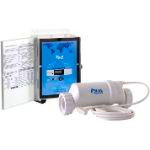 | BLUE WORKS Pool Chlorine Generator Chlorinator | |
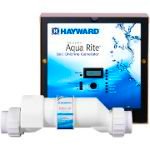 | Hayward W3AQR3 AquaRite System | |
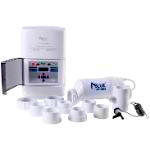 | BLUE WORKS Salt Water Pool Chlorine Generator System |
Verdict:
The drop-in saltwater systems are the best choice for hot tubs, as in-line ones are designed mostly for pools with a large volume of water, require professional installation, and are up to several times more expensive. But, you can still use them if you don’t want extra cables in your spa.
Step 3 — Buy Everything You Need for Conversion to a Saltwater Hot Tub
I made a list of what you need to buy before starting. You should check it as you may already have some of the things and will save on spending.
- Saltwater system
Buy a saltwater system after deciding which device suits your needs
 | Saltron Mini Salt System Drop-In Saltwater Chlorine Generator | |
 | ControlOMatic SmarterSpa Saltwater Smart Chlorine Generation System | |
 | Hayward AquaRite Electronic Salt Chlorination System |
- Test strips
Regular hot tub strips to test for pH, alkalinity, calcium hardness, and chlorine
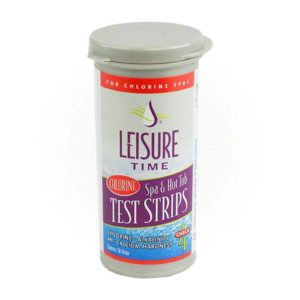 | Leisure Test Strips for Spas and Hot Tubs | |
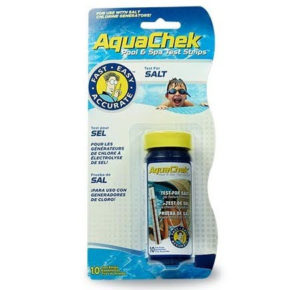 | Saltwater Test Strips |
- Hot Tub Maintenance Kit
Saltwater systems have to be started with balanced water only (you will find out why in the next section)
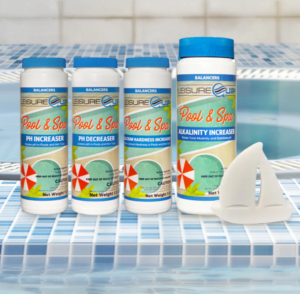 | Chemical Balancer Maintenance Kit |
- Hot tub Filters
You’ll need to change hot tub filters before starting a saltwater system (you will find out why in the next section)
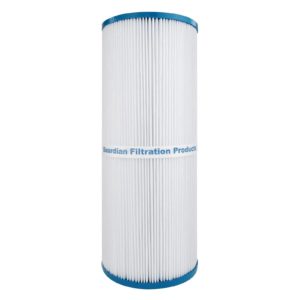 | For regular hot tubs: Replacement Pool Spa Filter | |
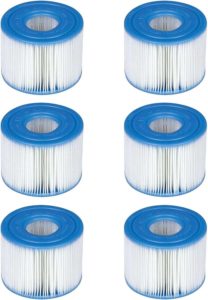 | For inflatable hot tubs: Intex Spa Filter Cartridges | |
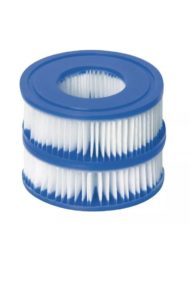 | For inflatable hot tubs: Bestway Spa Filter Cartridges |
- Filter cleaner
If it’s not time to change the filters, you can clean them with
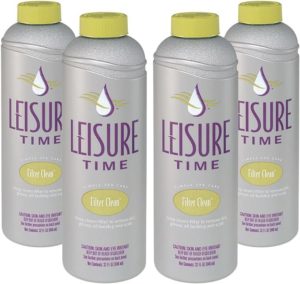 | Leisure Time Filter Cleaner |
- Hose with filter
Needed to refill your hot tub with fresh water
 | Garden Hose End Pre Filter |
- GFCI electrical outlet with cover— install if not already available near the spa
Step 4 — Prepare the Hot Tub for Conversion to a Saltwater Tub
Now you need to prepare the spa for the saltwater system installation. For the system to work properly, you need to start it with fresh, clean water. Contamination and residues of hot tub sanitizers will interfere with the operation of the saltwater system.
1. Clean and drain a hot tub
Clean the hot tub with a hot tub cleaner before draining to remove contaminants from inside of the spa plumbing and jets. Drain the water and clean the surface.
2. Refill the hot tub
Refill the hot tub as usual but use a hose with a filter to ensure maximum water purity.
3. Check hot tub water chemistry
saltwater systems require balanced and pure water to start and work correctly. Check the water with test strips and balance the water if needed (jump to the section to see how).
Step 5 — Install the Saltwater System
Installation instructions for each type of saltwater system
The drop-in saltwater system is the best choice for hot tubs because of affordable price, easy maintenance, and easy installation:
- Mount the control panel and cell holder (if provided) on the spa wall or near the spa. Choose a location that will protect from rain, moisture, and direct sunlight.
- Add salt — the amount of salt to add depends on the size of the spa. On average, you need 2.3-2.5 cups per 100 gallons of clean water, but read the manufacturer’s instructions for more accurate measurements. Add salt to warm water, it will help dissolve the salt faster.
- Dip the cell in the water — it should hang vertically in the deepest location of the hot tub, it’s not recommended to place the cell in the filter area.
Installation is complete and now you can plug it in and turn on the saltwater generator.
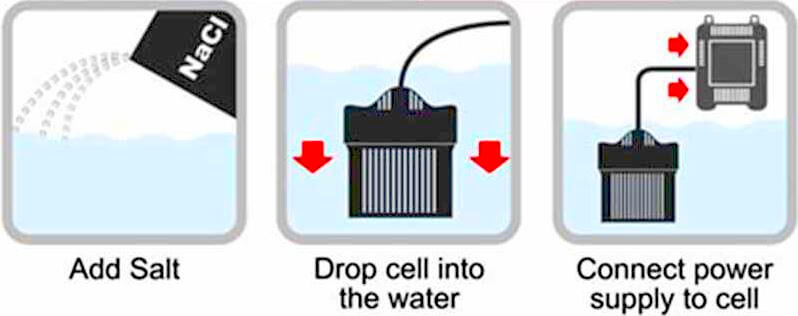
Source: solaxx.com
In-line saltwater generators require difficult installation. The cell should be installed in the spa plumbing after the filter and heater. This way, the water will flow through the cell in the correct direction and concentrated chlorine/bromine will not pass through any other equipment and will not damage it. This type of generator is better to be installed by professionals, according to the manufacturer’s instructions.
Congrats! Now you have a saltwater hot tub. Enjoy fresh and soft water with minimum chemicals.
How To Maintain a Saltwater Hot Tub — You Still Need Chemicals
- Chemicals — saltwater hot tubs also need chemicals, besides chlorine\bromine which are produced naturally. It is very important to note that this is just one component of your spa water chemistry.
Test your hot tub water chemistry with Test Strips for Spas and Hot Tubs and maintain recommended levels (as shown in the table below) with hot tub chemicals. It’s easy to get all the chemicals you need for a saltwater hot tub in one kit — Hot Tub Chemical Balancer Maintenance Kit.
The table shows the optimal water chemistry for hot tub spas which you should maintain. Check it with
| Parameter | Recommended Level |
| Salt | 2000 to 2500 ppm |
| Free Chlorine | 2.0 to 3.0 |
| pH | 7.2 to 7.6 |
| Total Alkalinity | 80 to 120 PPM |
| Calcium Hardness | 200 to 400 PPM |
| Cyanuric acid (stabilizer, used in outdoor spas only) | 50 to 80 ppm |
- Shock — saltwater hot tubs also need to be shocked weekly, after intensive use or if you haven’t used it for a long time. You should also shock the hot tub if your water chemistry levels are good, but the water is cloudy or smells. You can use chlorine shock or non-chlorine shock for saltwater hot tubs (depending on what salt you use).
- Cell inspection — the cell should be inspected every 3 months. Unplug the system and inspect the cell for a scaling white deposit. If it exists, you should clean the cell with vinegar or muriatic acid (see the manufacturer’s instructions).
Is a Saltwater Hot Tub More Expensive Versus Chlorine/Bromine Tablets?
The initial cost of a saltwater hot tub is higher because you need to buy the saltwater system and change the cell every 1-5 years (depending on the model). However, in the long term, the cost of a saltwater hot tub will be less than using chlorine/bromine tablets which you should add every week.
So, you won’t pay more, and you will get a lot of benefits:
- Improved water quality – the salt used with a generator provides continued skin softening, no skin or eye irritation, and no harsh chemicals on your swimsuits.
- Reduced maintenance – you don’t have to remember to add chlorine every week. You don’t have to store and contact it.
- Environment friendly – saves water (refill it once a year), less chemical usage (add salt once instead of weekly adding chlorine/bromine), no need to recycle packaging, and pollute the environment when manufacturing chemicals.
Summary
I’ve shared with you the 5 steps to convert your hot tub to a saltwater one. To help you make your choice easier, I’ve supplemented these steps with my tips, insights, and proven products. Now you can easily determine whether you need a chlorinator or a brominator, whether you need a drop-in or in-line system, and what chemicals you need to buy (if you don’t have any of the above). You’ll also be able to correctly prepare your hot tub for conversion and know if you need a professional to install an in-line system or if you can do it yourself with a drop-in generator.
Use these steps to convert your hot tub to saltwater, enjoy it, and remember to maintain it properly.
FAQ
💡 How Do Salt Water Hot Tub Systems Work?
The saltwater generators rely on electrolysis. As a result, you have a system that naturally produces chlorine or bromine from salt. Then it is circulated into the water to sanitize and disinfect it.
🤔 Can Any Hot Tub Be Converted to Saltwater?
Yes, every hot tub could be turned to saltwater, even inflatable and wooden tubs (with restrictions which we described in the article). Slightly salty water is suitable for any hot tub surface and equipment.
❓ Can Wooden Hot Tubs Be Converted to Saltwater?
Yes, but with restrictions. In wooden hot tubs, bromine generators should only be used because chlorine has a bad effect on wood.
💰 Are Salt Water Hot Tubs More Expensive?
The Initial cost of a saltwater hot tub is always higher because it requires saltwater chlorine or bromine generators. But, the maintenance is cheaper than the maintenance of a traditional hot tub. You don’t need to add chlorine or bromine regularly. You need to add salt when you fill the hot tub with water and the system utilizes this until the water is replaced (from 3 months up to 1 year depending on the intensity of usage).
🧂 How Salty Will the Hot Tub Water Be? Like Seawater?
You won’t taste salt or see it on the walls and skin. Just compare seawater — 35,000 ppm, human tears — 9,000 ppm, hot tub saltwater — 2,500 ppm.
⚖️ How Much Salt Do I Put In My Saltwater Hot Tub?
The amount of salt depends on the volume of the spa and is about 2 pounds for every 100 gallons, you should achieve an optimal salinity of 2000-2500 ppm.
📅 How Often Do You Have To Add Salt to the Saltwater Hot Tub?
You do not add salt daily. Only on the initial setup. The salt makes chlorine/bromine, and the chlorine/bromine breaks down back into salt. Again, you may need to add salt if you add a lot of new water.
References
- Chakraborty, A. (2023). Bathing practices in dermatology: Uses and implications for patient management. Indian Dermatology Online Journal, 14(5), 686. https://doi.org/10.4103/idoj.idoj_40_23
- American Lung Association. (n.d.). Promising or placebo? Halo Salt Therapy: resurgence of a salt cave spa treatment. https://www.lung.org/blog/promising-placebo-salt-halotherapy
- Wikipedia contributors. (2023, November 24). Electrolysis. Wikipedia. https://en.wikipedia.org/wiki/Electrolysis


